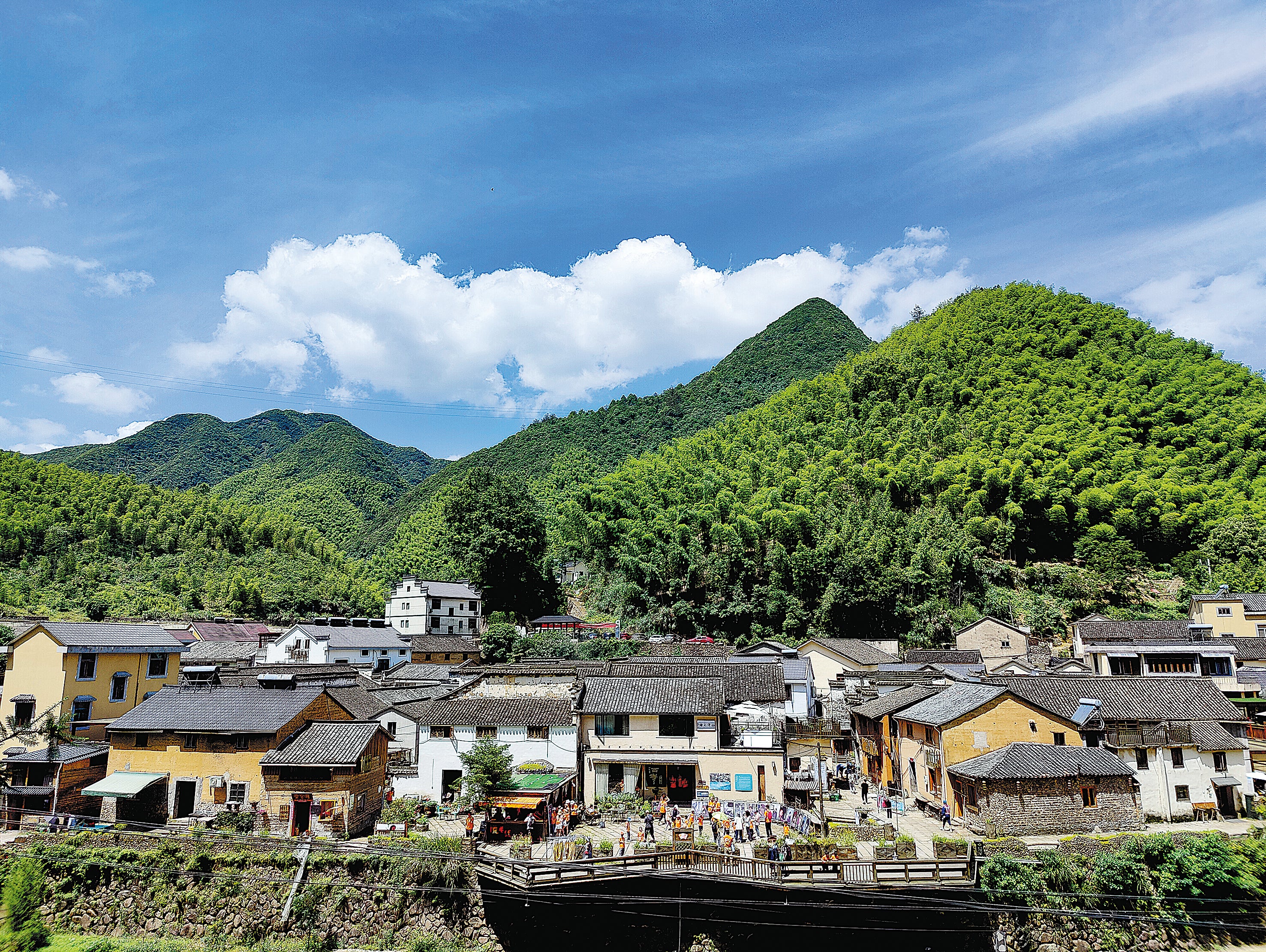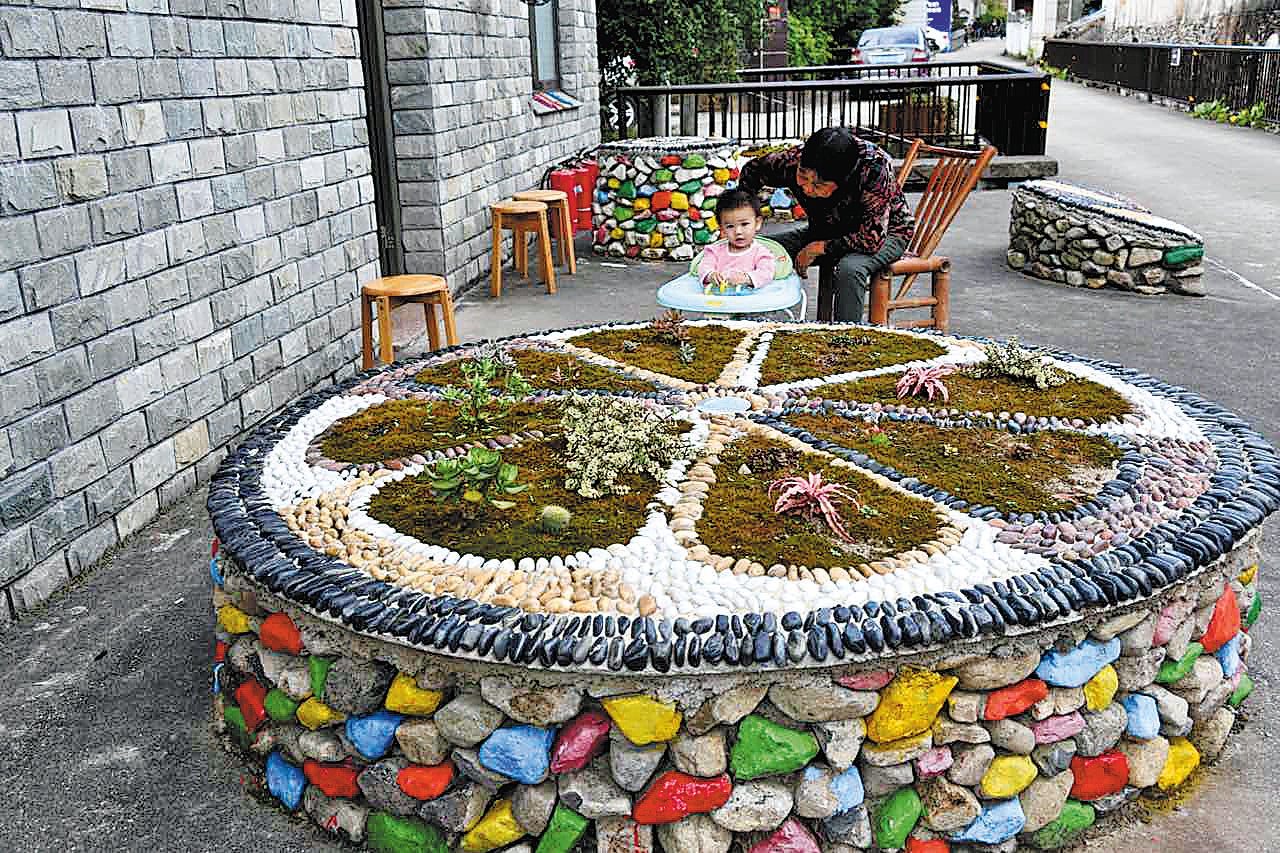Rural China turns its hand to artistic field
THE ARTICLES ON THESE PAGES ARE PRODUCED BY CHINA DAILY, WHICH TAKES SOLE RESPONSIBILITY FOR THE CONTENTS

Xing Weibin likes nothing more than to have breakfast surrounded by nature. A cup of coffee and a good book in the early morning sunshine at his Saxiu art space is his idea of bliss.
Rural China is attracting an increasing number of urbanites like Xing, luring them away from the hustle and bustle of the city for the quiet life in the countryside.
Xing visited the village of Shishe in Tonglu county, Zhejiang, in 2015. The 13,840-acre village has about 900 residents and sits among a serene natural environment.
“It is quiet but not deserted, it is not overdeveloped and the architecture and population size is perfect to create the kind of idyllic model village that people imagine,” Xing said.
He decided to create an art space and chose Shishe as the ideal location. Xing thinks the village of Shishe can be an entire economic entity in itself with art at the centre of increasing the village’s economic output.
In his plans, people from different walks of life not commonly seen in rural China, such as artists, would come to the space to work or exhibit and the villagers and visitors could take part in activities.
Xing started his project in 2016, acquiring the relevant permissions and renting some local residences to transform into his art space. Now identifying himself as a curator and a practitioner of rural vitalisation, Xing invested 2 million yuan (£228,000) in the renovation project and invited his friends – artists, scholars and entrepreneurs – to Saxiu art space for its opening ceremony in 2017.

Saxiu has held a variety of events, from art exhibitions and book-sharing events to coffee-tastings, attracting visitors to enjoy the rural art experience.
“I believe rural vitalisation through art cannot depend on artists alone, because they are confined to their own creations. The core is to stick to local artisanship, tradition and culture,” Xing says.
Sun Jiashan, a researcher with the Chinese National Academy of Arts, said: “Rural vitalisation through art is an important way to develop rural areas. Art refers to not only high culture but also grassroots culture and traditional local culture.
“Rural vitalisation through art does not have a fixed pattern, but it must utilise local resources and inspire local residents.”
In Zhejiang more artistic villages are flourishing with the effort of people such as Xing and the local government.
Cong Zhiqiang, an associate professor in the School of Arts at Renmin University of China in Beijing, is searching for a place to put into practice his ideas about art and has researched how traditional rural villages can vitalise through art.
Luck found him in 2019 when he met Li Guijun, deputy Party secretary of Ninghai county in Zhejiang. Ninghai has a population of 690,000. The GDP of the county was 72.2 billion yuan last year. In 2019 the county government started its “rural vitalisation through art” project, collaborating with local residents and higher education institutions, inviting artists to come to villages and give their opinions and ideas.
In April 2019 Cong and his students visited Gejia, a village with a 1,200-year history, with most residents making a living from weaving bamboo.
At first the villagers did not really understand the aims of the project. Cong persisted and began observing the village. He made a bench and placed it in front of the villagers’ cultural activity centre so people would often be reminded of the project.
During his 14-day-stay in Gejia, Cong renovated eight different places, and trust between him and the villagers grew.
“What we are doing here in Gejia is not asking artists to create, but using an artistic logic to solve problems in rural villages,” Cong said.
“It is important to discover the skills of villagers, the skills they master for a living, and let them engage in the process.”
Previously published on Chinadaily.com.cn
